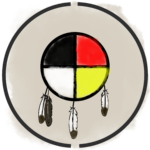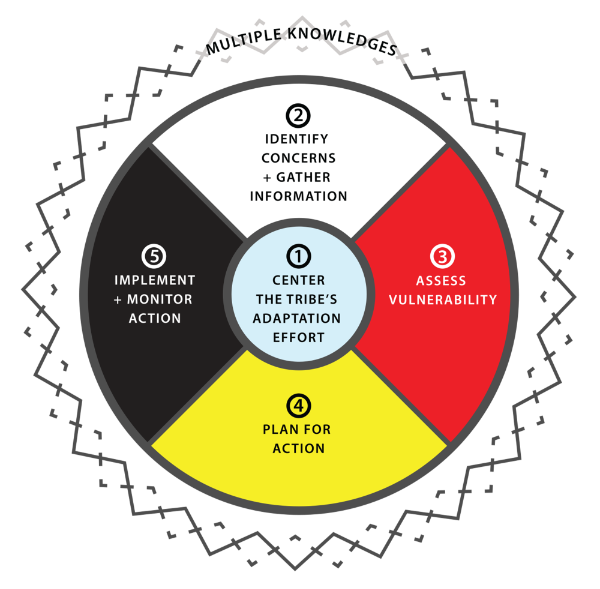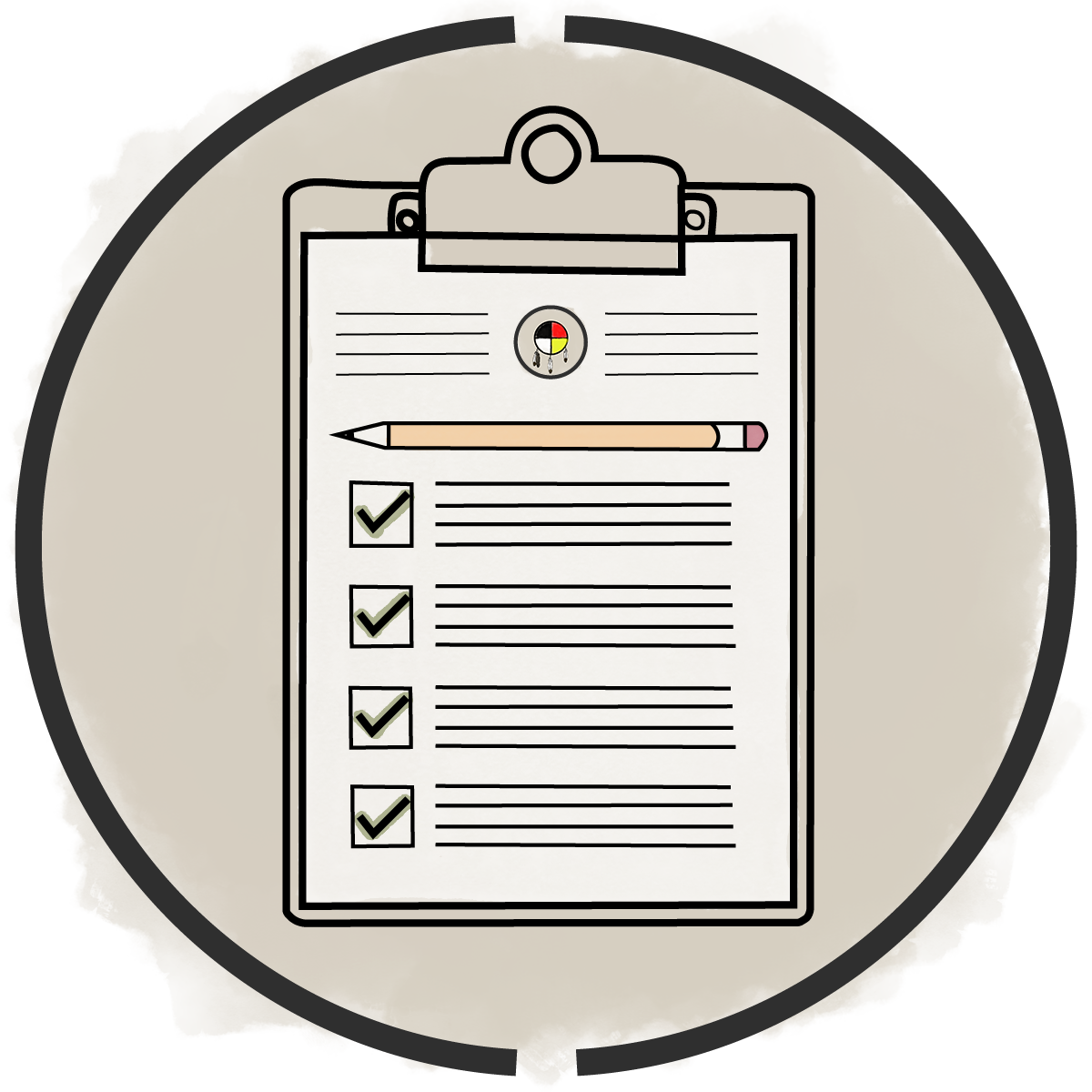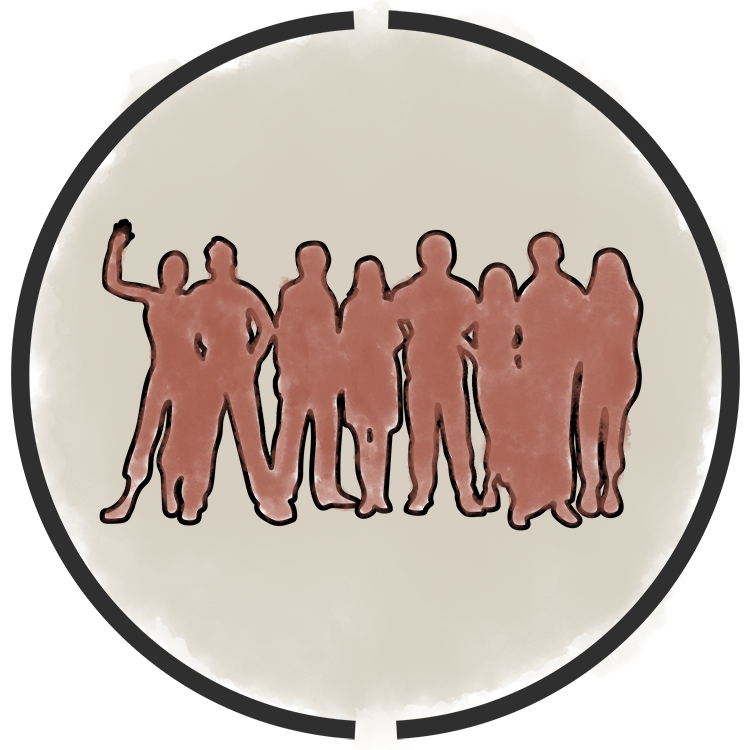Step 1: Center the Tribe’s Adaptation Efforts
Initiate and embed the climate adaptation planning process within the Tribe’s community vision and goals.
Step 1 Content
Click the icon above (or scroll lower on the page) to directly access the main Step content.
Step 1 Checklist
Click the icon above to download an easy-to-use checklist to use while working through Step 1.
Step 1 tribal Examples
Click the icon above to see examples from Tribal climate initiatives across the US specific to Step 1.
This step is about embedding the climate adaptation planning process within the Tribe’s community vision and goals. Climate change is already impacting the land, water, animals, plants, and the built environment, leading to far reaching impacts on tribal culture, community health, subsistence, economies, ways of life, and sovereignty. Acknowledging that everything is important, it may be necessary to limit the scope of the adaptation planning process, at least initially, based on available resources and tribal staff capacity. Over time and with additional resources, the scope may be expanded to include all the potential concerns related to climate change and develop adaptation actions for every potential concern.
Activity 1: Select Climate Change Planning Approach
Because climate change affects nearly every aspect of the Tribal community, there are many opportunities to begin building climate resilience rooted in the Tribe’s values and priorities.
“Our lands and resources are the basis for our spiritual life. That’s been our way since time began. By preparing for further environmental change, we can mitigate threats to our way of life.”

Guiding Questions
Helpful questions to consider during this activity.

Traditional Knowledges
Considerations for integrating and protecting
Traditional Knowledges during this activity.
Community Engagement Checkpoint
Consider talking with other staff members, Elders, and members of Tribal leadership to identify and build support for the best place to begin the adaptation planning process.
Activity 2: Assemble the Climate Change Planning Team
Build a diverse climate change planning team to ensure that all voices are heard in the planning process.
“Let us put our minds together and see what life we can make for our children.”

Guiding Questions
Helpful questions to consider during this activity.

Traditional Knowledges
Considerations for integrating and protecting
Traditional Knowledges during this activity.
Community Engagement Checkpoint
Consider providing an opportunity for interested Tribal community members to participate on the planning team.[7]
Activity 3: Develop a Vision, Goals, and Objectives
Develop a vision, goals, and objectives for climate adaptation to ensure planning efforts remain centered on the Tribe’s values and goals for future generations.
“The Yakama Nation is strong, and our strength is growing. By continuing to blend our traditional knowledge with newer innovations, and by reshaping our long-established tribal community and natural resource programs, the Yakama Nation will continue to thrive amidst an ever-changing world.”

Guiding Questions
Helpful questions to consider during this activity.

Traditional Knowledges
Considerations for integrating and protecting
Traditional Knowledges during this activity.
Community Engagement Checkpoint
Consider involving the Tribal community in developing a vision for the climate change adaptation planning effort.
Documentation Checkpoint
Consider drafting an outline of the adaptation plan based on the Tribe’s selected planning approach (Step 1: Activity 1) and articulated goals and objectives (Step 1: Activity 3).
Activity 4: Consider Opportunities & Risks of Incorporating Traditional Knowledges
Incorporating Traditional Knowledges (TKs) in climate change adaptation planning is not without risk, but can provide a significant amount of value.
“Restoration of historic structures and functions of cultural-use plants, foods, habitat, and animals will remain a priority. Additionally, a continued understanding of cultural place names will continue to be significant. Therefore, the Tribes will have continued Tribal Elder involvement in resource planning, because the importance of oral histories that convey the voice of ancestors is valued.”

Guiding Questions
Helpful questions to consider during this activity.

Traditional Knowledges
Considerations for integrating and protecting
Traditional Knowledges during this activity.
Community Engagement Checkpoint
Utilize the CTKW Guidelines when considering engagement with Tribal members, staff, and Traditional Knowledge holders.
Activity 5: Gain Tribal Leadership Support
Support from Tribal leadership is critical to the success of the Tribe’s climate change adaptation planning efforts.
“Our people have long lived by an idea that we know best how to govern ourselves. We pursue every opportunity to take back control of our lands, our government, and our resources. This [climate change strategic plan] is another example of our pursuit for a better homeland for future generations.”

Guiding Questions
Helpful questions to consider during this activity.

Traditional Knowledges
Considerations for integrating and protecting
Traditional Knowledges during this activity.
Activity 6: Tribal Community Engagement
Engage the community early and often during the planning process using methods tailored to the specific audience.
“Everything on the earth has a purpose, every disease an herb to cure it, and every person a mission. This is the Indian theory of existence.”

Guiding Questions
Helpful questions to consider during this activity.

Traditional Knowledges
Considerations for integrating and protecting
Traditional Knowledges during this activity.
Activity 7: pursue funding
Cast a wide net when applying for funding to support climate change adaptation activities.
“To the Ojibwe, natural resources are cultural resources. There is no separation between how the bands manage and interact with a resource and how their culture endures: one is dependent on the other. Climate change, however, is threatening the very viability of many natural resources important to the Ojibwe.”

Guiding Questions
Helpful questions to consider during this activity.

Traditional Knowledges
Considerations for integrating and protecting
Traditional Knowledges during this activity.
Community Engagement Checkpoint
Community engagement opportunities can be considered and incorporated in the grant writing process.
Activity 8: Engage External Partners
Set clear roles and expectations when engaging external partners to enhance a climate change adaptation planning process.
“Indigenous peoples have long maintained…that their homelands are being transformed irreversibly by climate change…and that they have unique contributions to make toward climate decision-making due to their extensive experiential knowledge.”

Guiding Questions
Helpful questions to consider during this activity.

Traditional Knowledges
Considerations for integrating and protecting
Traditional Knowledges during this activity.






